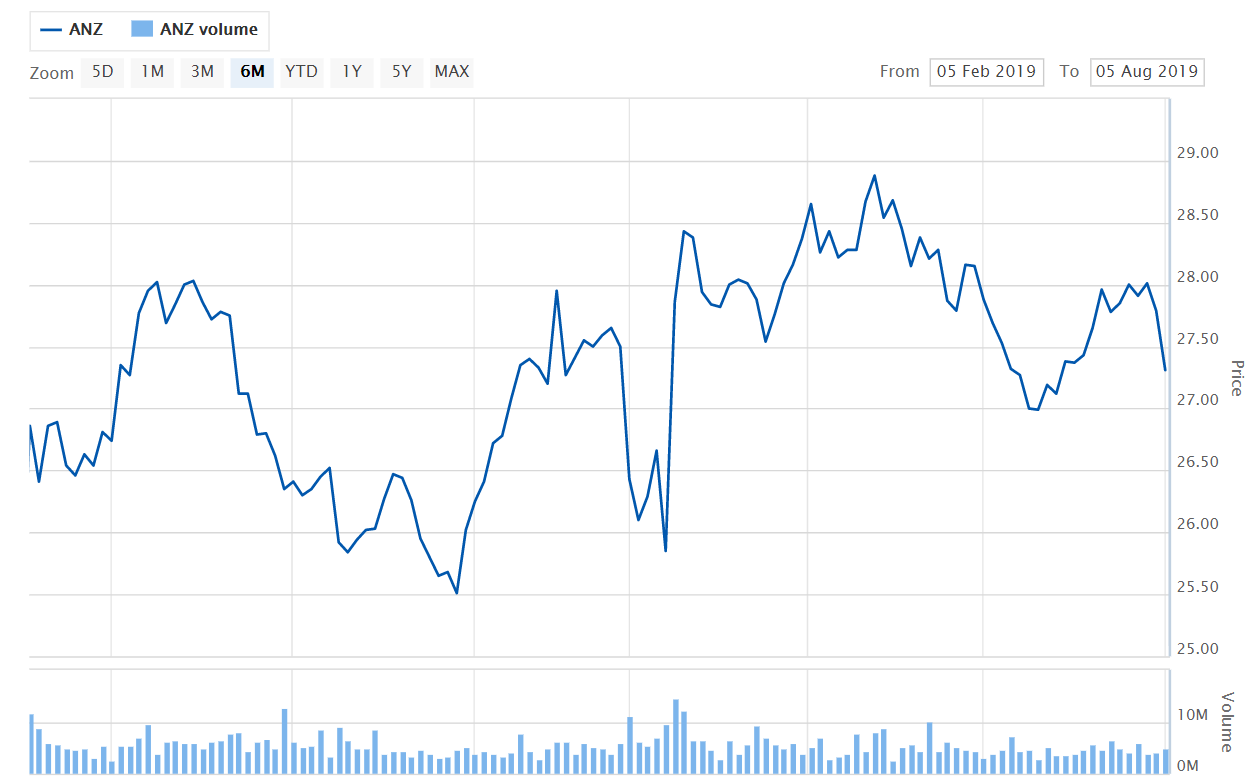One of the top leading banking groups of Australia, Australia and New Zealand Banking Group Limited (ASX: ANZ) has announced wide-ranging reforms to its remuneration structure across the group.
Rather than providing individual bonuses for the vast majority of employees, the bank will now be giving incentives which will be based on the overall performance of the bank. This is one of the corrective measures the bank has taken following Royal Commission recommendations. Earlier, the Royal Commission had highlighted various issues with leading Australian banks which were negatively impacting customers and the community. This included the over emphasis on individual bonuses within a bank which was a cause of lot of problems, as employees were more focussed on their bonuses rather providing quality service to their customers.
The individualsâ pursuit of gain was the reason behind many of the issues highlighted by the Royal Commission. This is why ANZ has now brought in reforms to make quality of service to its customers and the community at large a primary determinant of variable bonuses paid to its employees.
The Royal Commission in its report had recommended all financial Institutions to review the design and implementation of their remuneration systems each year while keeping their focus on the understanding of not only what their staff do but also on how they do it.
From 1st October 2019 onwards, the ANZ employees will be receiving variable remuneration in the form of a Group Performance Dividend. This Dividend will be calculated by taking into consideration the bankâs performance from a risk, financial, people, reputation and customer perspective.
As per ANZâs 2018 annual report, the ANZ Group Performance Framework is designed around three key inputs: ⢠Creating a safe bank with sound risk-mitigation practices;
- Achieving the bankâs agreed annual and longer-term goals; and
- Realising the bankâs strategic vision.
Performance indicators are set by the Board at the start of each year under the categories of:
- Risk â a separate measure which can impact the overall performance assessment;
- Financial and Discipline, 50% weighting;
- Customer, 25% weighting; and
- People and Reputation, 25% weighting.
The indicators within each category help ANZ employees to focus on both annual priorities and on broader long-term strategies to deliver great outcomes for its customers and augment shareholder value. The performance indicators are designed to be stretched, yet achievable. They may reflect targets set for the current year and also longer-term strategic goals.
How is ANZâs CEO Performance Accessed?
As per ANZ 2018 Annual report, the performance of the CEO and each Disclosed Executive is assessed against their objectives, ANZâs values and ANZâs risk and compliance standards.
The HR Committee first takes inputs from the CEO, CRO (on risk management), CFO (on financial performance), Group Executive, Talent and Culture (GE T&C) (on talent and culture matters) and Group General Manager Internal Audit (on internal audit matters) and then reviews the performance outcomes for the CEO and each Disclosed Executive. The Committee takes into consideration, the performance of the Group, Division and individual to determine remuneration recommendations for the CEO and Disclosed Executives.
When the CEO and disclosed executives deliver on target performance at Group, business and individual levels while adhering to risk/compliance guidelines, variable remuneration recommendations are likely to be around the target opportunity. Recommendations will be adjusted up or down in line with performance. Following this, the HR Committeeâs recommendations are reviewed and ultimately approved by the Board.
Although ANZâs recent reforms would not impact the overall total compensation and only the mix between fixed and variable remuneration would change, it would help in reinforcing a high-performance culture within the bank. Besides that, this change would provide greater clarity to the employees. ANZ is making sure that its employees are meeting standards of behaviour as well as performance. The employees who fulfil the conduct and performance requirements would be eligible for variable remuneration.
ANZ Stock Performance: In the past six months, ANZâs stock provided a return of 1.68%. On 6 August 2019, ANZâs stock last traded at a price of $ 26.720, down by 2.16% from its previous closing price, with a market capitalisation of $ 77.41 billion. The stock is trading at a PE multiple of 12.46x with an annual dividend yield of 5.86%.

ANZâs Six-Month Stock Performance (Source: ASX)
Last year, National Australia Bank Limited (ASX: NAB) discussed an identical issue in its 2018 Remuneration Report. In its report, the bank accepted the fact that financial outcomes (short-term) grab the major focus of the traditional incentive schemes. The bank further stated that this approach does not best serve the interests of its customers as well as shareholders.
In 2018, NAB introduced a new Executive Remuneration Framework to encourage long-term decision making, reducing the One NAB Score for employees to 80% (a 20% reduction from target) as well as reducing the One NAB Score for the Executive Leadership Team to 70% (a 30% reduction from target). As a result, variable pay across the bank was reduced by approximately $ 114 million from target.
Last year, the NABâs Board also exercised its judgement to provide a variable reward outcome of:
- 5% of target (30% of maximum) for the Group CEO;
- 60% of this variable reward is deferred in shares and restricted until 2022 to drive long-term decision making and to align with the shareholder experience;
- 5% â 105% of target for members of the Executive Leadership Team.
NAB Stock Performance: In the past six months, NABâs stock provided a return of 12.74%. On 6 August 2019, NABâs stock last traded at a price of $ 27.51, down by 2.27% from its previous closing price, with a market capitalisation of $ 81.16 billion. The stock is trading at a PE multiple of 13.72x with an annual dividend yield of 6.47%.
Recently in July 2019, Australiaâs another leading bank, Commonwealth Bank of Australia (ASX: CBA) changed the name of its Remuneration Committee to People & Remuneration Committee, to showcase its increased focus and emphasis on people, talent management, organisational culture, diversity & inclusion.
CBA Stock Performance: In the past six months, CBAâs stock provided a return of 11.86%. On 6 August 2019, CBAâs stock last traded at a price of $ 79.800, down by 1.736% from its previous closing pice, with a market capitalisation of $ 143.76 billion. The stock is trading at a PE multiple of 15.82x with an annual dividend yield of 5.31%.
To maintain focus on customers, it is very important for employees of any bank to prioritise the needs of the customer over their individual goals. From its revised remuneration strategy, ANZ is trying to keep the motivation of its people on the right track.
Disclaimer
This website is a service of Kalkine Media Pty. Ltd. A.C.N. 629 651 672. The website has been prepared for informational purposes only and is not intended to be used as a complete source of information on any particular company. Kalkine Media does not in any way endorse or recommend individuals, products or services that may be discussed on this site. Our publications are NOT a solicitation or recommendation to buy, sell or hold. We are neither licensed nor qualified to provide investment advice.






